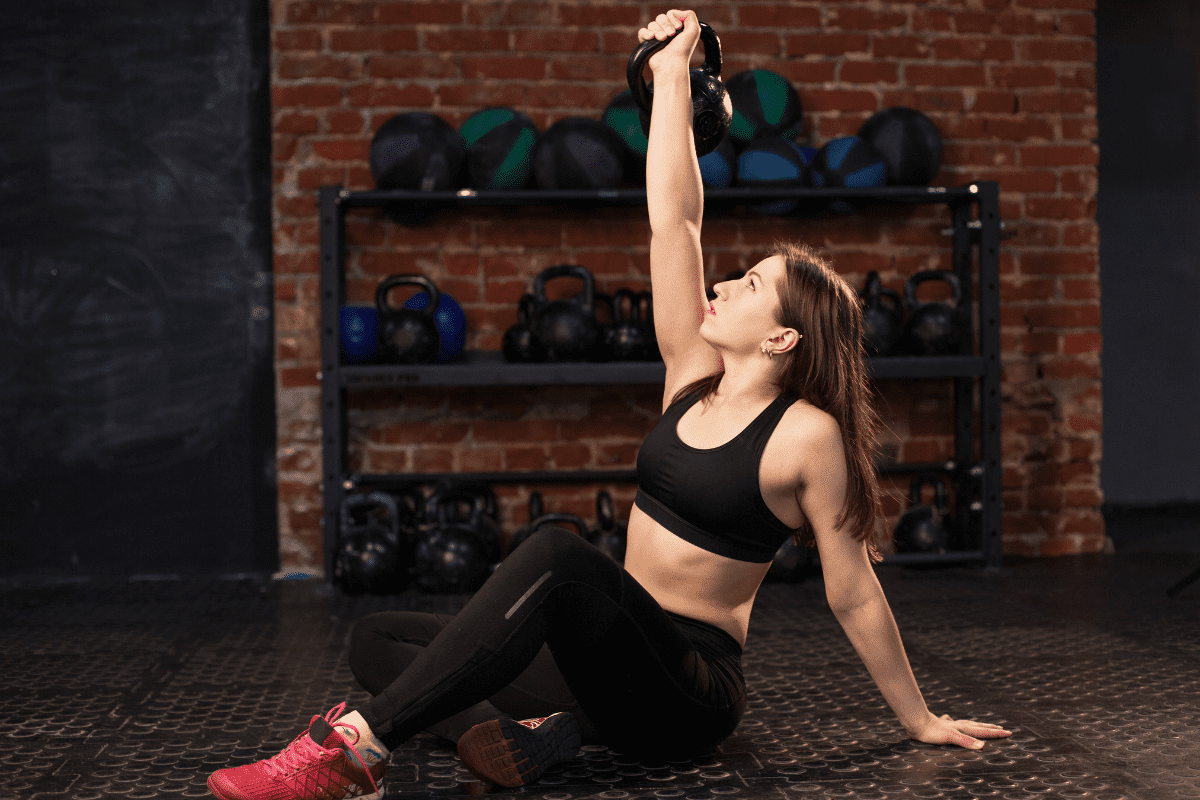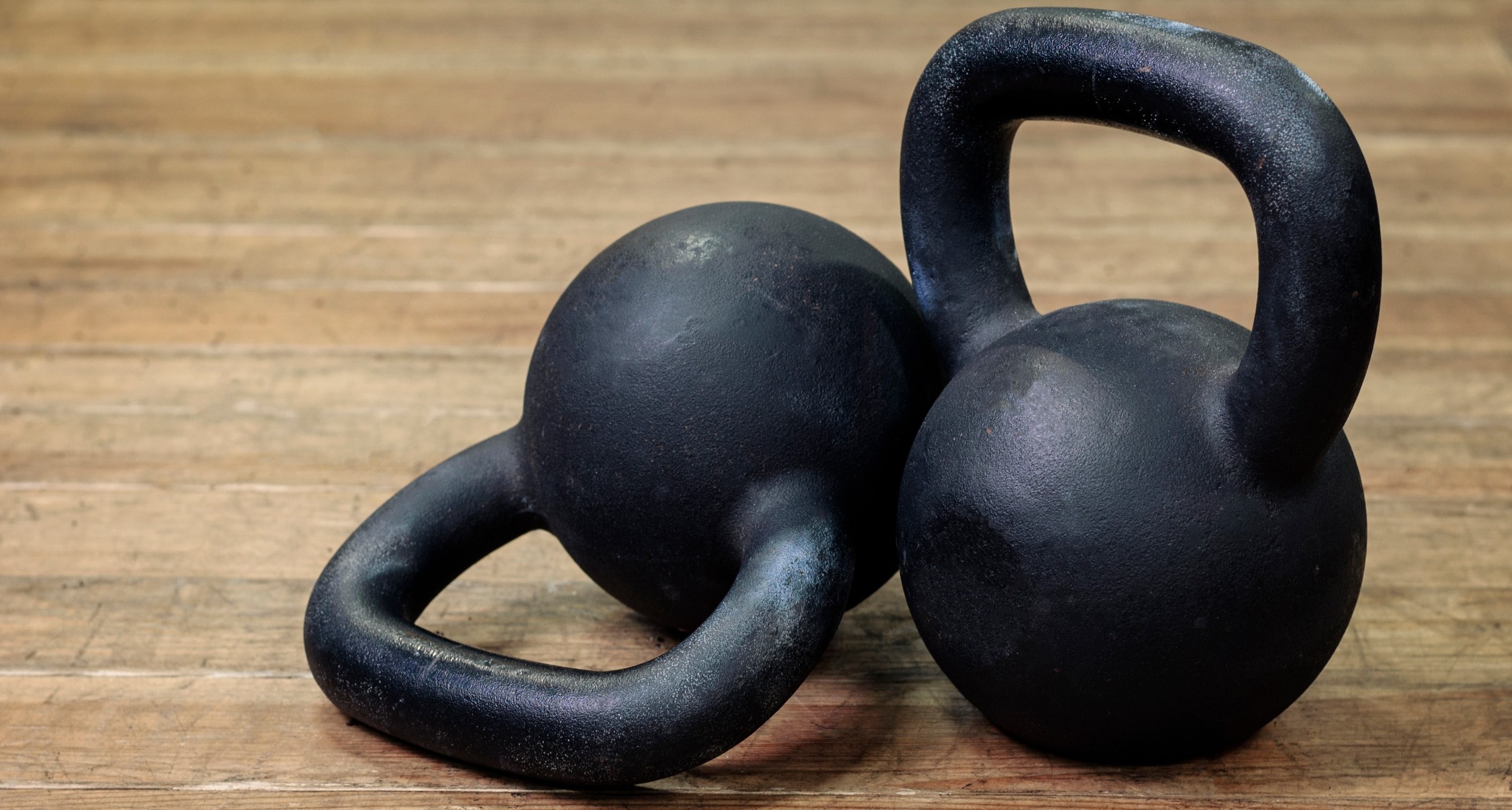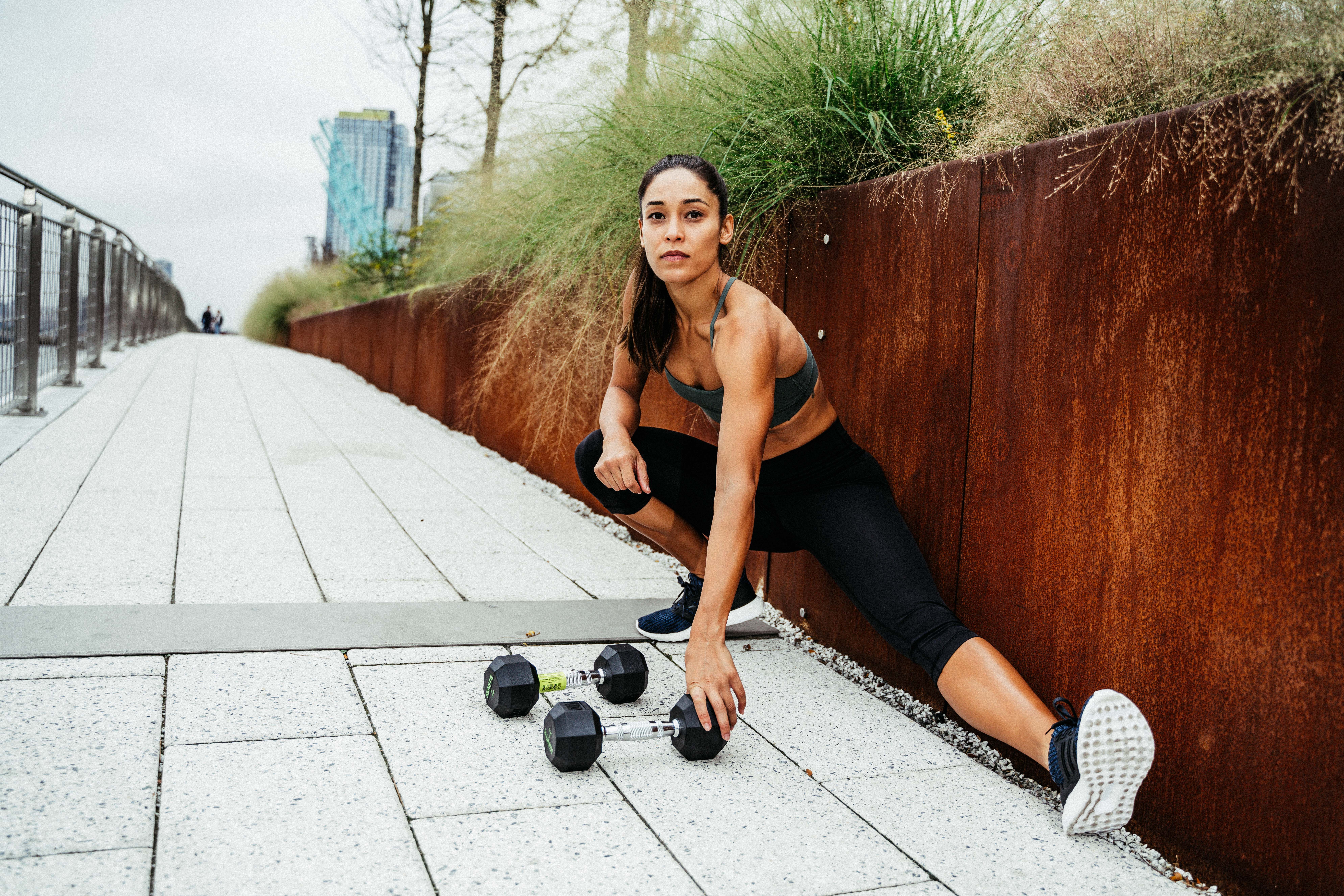
It’s time to learn how to do a Turkish get-up! I’m glad you want to learn it, as it’s a unconfined functional exercise that will modernize your strength and balance. However, it’s moreover a bit of a technical movement, as there are quite a few steps to follow.
Here’s what we’ll imbricate today:

In the video above, Mentor Staci walks you through proper technique with the Turkish get-up (TGU).
Staci demonstrates three versions of the TGU:
But there’s a lot to the move, so we’ll unravel it lanugo for you.
Before we do, it’s worth pointing out that Staci is a mentor here at NF!
Yep, we’re lucky to have her on the team.
When she’s not rented making videos on ramified exercises, she’s coaching nerds on how to grow strong and level up their nutrition.
Pretty cool, huh?
If you’re interested, you can learn all well-nigh our coaching program right here:
Coach Staci can teach you how to grow strong!
Here’s how to perform the Turkish get-up, step by step:
Begin in a supine position, extending one arm vertically while limp the same-side leg. This is our starting stance.
For those using spare weight, start on your side and pull the weight tropical with two arms. Roll onto your back, standing to alimony the weight close, then proffer the weight overhead with both arms, taking your time and maintaining control.
Maintain eye contact with the hand overhead as you roll from your when up onto your opposite forearm.
Continue the movement by getting up onto your hand, and maintaining eye contact with the other hand overhead.
Keep your hand on the ground and lift your hips upper unbearable to sweep your leg underneath you. We’re looking to move that leg far unbearable to make a triangle on the ground with your hand, knee, and foot.
Make sure the triangle you’ve created with hand, knee, and foot feels strong surpassing shifting weight and moving on to the next step.
Lift up your soul into a kneeling lunge, with one knee up and the other down. Take your time to maintain your balance.
Stand up completely. This is the halfway point of the Turkish get-up.
Start the descent by stepping when into a kneeling lunge.
Lower your hand, forming the same stable triangle with your hand, knee, and foot on the ground.
Push your hand strong into the ground and alimony the hips elevated, as you sweep the leg forward and sit on the ground.
Bring your forearm and elbow lanugo to the ground, standing to maintain eye contact with your hand (or weight) overhead.
Complete the Turkish get-up by gently lowering your upper when to the ground.
For those with widow weight, lower it lanugo with two hands (if necessary), keeping it close, and then roll it to the side to put it on the ground.
The Turkish get-up is very versatile and can be worked into your routine in several variegated ways.
Here are some quick examples of a Turkish get-up Workout:
Let’s unravel this lanugo a bit.
If your aim is to warm up and prepare your soul for action, incorporate the Turkish get-up with 1-2 easy sets. Perform 2-3 reps on each side, successive between left and right.
This can be washed-up with a lighter weight or just your bodyweight, focusing on proper form. Plane without widow weight, ensure you go through all the points of performance, treating it as if there’s resistance. Each repetition may take 15-30 seconds (or increasingly if you’re first learning), offering a thorough warm-up. If you need a bit increasingly warm-up, then do a few increasingly reps! This will get your unshortened soul ready for increasingly activity.
While it doesn’t squint like a traditional exercise, you’ll still build plenty of strength when you start increasing the weight and testing yourself.
Because of the longer time it takes to well-constructed each rep (as opposed to something like a push-up or a squat), you’ll tend to see lower rep ranges worked with this exercise – 1 to 3 reps per side is a good place to start.
You can work the same side (all 1-3 reps washed-up surpassing switching) or unorganized reps (one rep left, one rep right, etc). To progress, protract to increase the weight used, as long as you have control.
If we want to turn the Turkish get-up into a workout exercise, then increase the total number of reps, while keeping the rest between sets minimal. Because the shoulder will fatigue first, it’s weightier to unorganized between sides (although if you’re feeling spicy – then well-constructed all the reps on one side first!). We’re moreover looking for light to medium weight so that we can alimony things going safely, while getting the heart rate up.
As with any of these recommendations, if you need to make it tougher then start subtracting weight and/or reps, or just subtract your rest time!
With all of these steps and cues in the Turkish get-up, you might be asking yourself: You might have heard of the 2012 study that linked the worthiness to stand up from the ground hands with a longer life. This was attributed in part to the fact that flexibility, strength, and coordination are all important things to maintain as one gets older. But plane if you’re not a senior in their golden years, you can still build up and goody from increasingly of each of those attributes. In addition, and this is something very often overlooked in people’s routines, it’s good to move in variegated directions.
Too often we throne to the gym and move virtually like we’re on tracks: moving forward or backward, two feet together, both stovepipe pressing or pulling at the same time. If we never explore variegated planes of motion and stress the stovepipe and legs independently of one another, then when we’re tabbed to do this outside the gym (cue Morpheus saying “Welcome to the real world”), there can be some troubles. Now any sort of movement is fantastic – so don’t stress out or second guess yourself – but when you’re looking to level up your workout, then squint to work your stovepipe and legs independently of each other.
When performing Turkish get-ups, you’ll strengthen muscles like:
But really, it’s just well-nigh every muscle you have.
That’s considering the Turkish get-up is what we undeniability a “total soul movement,” meaning it requires every muscle in your body, all working together.
So your shoulders will stabilize the weight whilom you, all while your glutes and cadre are engaged.
On top of that, the Turkish get-up will moreover help improve:
Because of this, you’ll often see the Turkish get-up included in a Functional Fitness Workout (like those found in CrossFit).
Functional Fitness ways training that will siphon over to your day-to-day life. With the TGU, it’ll help you remain strong to get off the floor or grab a heavy item from a shelf.
It’s no wonder people have been doing this exercise for well over 100 years (and some legends say over 200 years!).
Speaking of…

Some believe that warmed-over wrestlers, in what is now Turkey, invented the get-up to prepare for their intense competitions. Additionally, it moreover demonstrated their immense strength to each other (everyone loves to show off now and then). To support this theory, it’s moreover worth noting that the Turkish get-up is traditionally washed-up with kettlebells, which have historical use in the region. For example, as BJJEE points out, you can find old kettlebells at the Taksim Pera Museum in Istanbul, Turkey. So that’s probably why it’s tabbed the “Turkish get-up.” You might moreover hear the TGU referred to as “The Turkish Stand-up” or “The Kettlebell Stand-up.” Don’t worry, it’s all the same exercise.
Even as we tout all these benefits, we moreover understand that the Turkish get-up is an intimidating exercise!
After all:
Never fear! There are a lot of things that a beginner can do to tackle the TGU, build confidence, and have fun with it.
Here are four ways a beginner can get started with the TGU:
As we mentioned earlier, a good starting point would be to work the movement with nothing but your own bodyweight.
There’s unbearable to think well-nigh with your own coordination, surpassing having to worry well-nigh executive flipside object too!
Another really good way to ease into the full TGU is to work on parts of it. You can do this anywhere withal the line for as many steps as you want, but some of my favorite variations:
1) From the start (lying on the floor), to getting up to your hand, and then when lanugo again.
2) From sitting up on your hand, to bridging your hips up and sweeping the leg under, and then reversing it.
3) From foot, knee, and hand on the ground, to getting into a reverse lunge position, then standing up, then reversing it all (reverse lunge when down, put your hand lanugo in the triangle)
As Mentor Staci showed in the video at the top of this article, a fun variation you can try surpassing subtracting any weights is standing up and lanugo with a shoe in your hand!
Specifically, we want to rest the shoe on our unshut hand, so that if you let your arm waif or skid forward, the shoe might topple out.
If you want a increasingly “fun” variation of that, you can do a TGU with a medicine wittiness in your hand. Pick a larger one so that you can’t grab and tenancy the wittiness (unless you have hands like the Hulk!). This will really test your skills to alimony the arm vertical and tenancy every speciality of the motion.
And if you think this is too mean-spirited, just know that in many kettlebell certification courses, they expect you to do this open-handed with a cup of water! Any wavering from a good position will result in an impromptu shower!
It’s all in good fun though, and will requite you a really, really good idea of what steps you need to practice more.

Despite the detailed steps, there are a few prevalent mistakes that often yield up. Let’s talk well-nigh what we SHOULD do to stave them.
This is so key that you should write it on the marrow of all your kettlebells. It can be tempting to squint virtually as you play one-person twister with yourself, but alimony watching that weight! It is much, much easier to tenancy it when you do. If you do have to ladle and waif the weight to the ground, it’s moreover easier to uncontrived if you’ve been watching it the unshortened time.
Early on, it’s worldwide to grab the weight with one hand, expressly with lighter loads. However, as weights get heavier, this becomes impractical and risks shoulder strain. Practice rolling to your side and using both hands to secure the weight, ensuring a controlled and unscratched setup.
As we’re lying on our when with the weight over our chest, it’s incredibly worldwide for people to want to sit forward and up to get into position. Maybe it’s years and years of sit-ups in gym class. While you can get yonder with this with light or no weight, it quickly becomes untellable with heavier weights.
Instead, think well-nigh rolling to your side (the side opposite the weight) to get onto your forearm and then hand. You should printing lanugo with the leg that’s wilting (the leg that’s the same side as the weight) to help the movement.
After we underpass our hips and sweep the leg underneath, it can be tempting to try and rush the next step and try to get upright and stand up. As with all these steps and mistakes, you’ll be worldly-wise to get yonder with this with lighter weight, but not heavy.
After you sweep your leg under, pause. Ensure you’re forming a stable triangle with your hand, knee, and foot. This foundational position provides the stability needed as you ascend.
This is a cue that might not make sense until you try it and finger it, but the worldwide mistake we’re trying to correct here is when people stand up from the lunge position, and their arm (and weight) shift forward. This often then results in them losing the weight to the front and dropping it.
To counteract this, focus on driving the weight up to the ceiling and when overdue your head. This intention will help alimony the weight over your own part-way of gravity so you can stand up triumphantly.
Another cue that may sound puzzling until you’re finishing up a TGU with heavy weight. Worldwide mistake here is to get excited and rush the end. Your hand is on the ground, your hips are on the ground – things are so tropical you can taste it!
Well, you might be tasting the weight in a moment if you simply fall backwards to your unshortened upper back. Just as we want to focus on rolling upwards at the start (as opposed to trying to sit forward and up), we want to do the same thing on the way down.
Get lanugo to the elbow, alimony the upper soul slightly rotated as you lower lanugo to touch one shoulder, THEN let the rest of your upper when and second shoulder roll lanugo and rest on the ground.
Plus, don’t forget…
Given the technical nature of this exercise, it’s easy to let your cadre relax. Actively engage your cadre throughout the unshortened movement to ensure stability and control.
Resist the temptation to rush through the Turkish get-up; it’s a recipe for injury. Move deliberately and in tenancy throughout the unshortened sequence. If necessary, opt for a lighter weight—there’s no shame in prioritizing safety.
Disclaimer: SPIRITUAL DEVOUT claims no credit for images featured on our blog site unless otherwise noted. All visual content is copyrighted to its respectful owners.